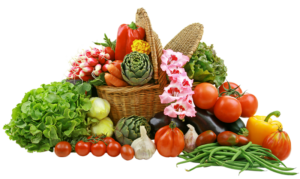Are all processed foods bad for our bodies?
There is so much confusion out there on what foods are good or bad for our bodies. When most people think about processed food they look to fast foods like burgers, pizzas, kebabs, chips etc. Then there is junk foods like chocolates, sweets, crisps, biscuits, cakes etc. All things that most people can agree are not good in large quantities and should be more of an exception to what we eat and not the norm.
But if we really get down to it, most foods are processed in some way or form in order to be packaged or tinned. This got me thinking about which items that fell into the processed foods list where actually ok for me to include in my diet. At the end of the day like most people I was mainly cutting out or minimising the fast foods, junk foods and ready-made meals/sauces in my daily nutrition. But was this enough?
What does processed food mean?
The definition of processed food is any food that has been changed from its natural state. This can be anything that has been frozen, canned, baked, fried, fermented, boiled or roasted. Additionally in some preserved foods there can be the addition of preservatives, flavours, salts, sugars and fats. So if you were to say I won’t eat any processed foods, you would be living on items from the fruit and vegetable aisles.
I found this dilemma when my aim was to eat clean and started to look at the foods I would want to include in my diet. The list that was available to me got really short and restricted, resulting in very little left to eat, if I was determined to steer clear of processed foods that is.
Although this may be ok for some to implement, I can honestly say I am not ready to go to this extreme. I want to give my body the right nutrition for it to work at its optimum level, but I had to find a realistic way of doing this. Understanding the different types of processed groups was the first step for me to decipher where all the foods I loved fell in the different categories.
Different levels of processed foods
When I read Tim Spector’s book ‘Spoon fed’ I came across the chapter on fast food phobia. In this chapter he covers the very information I was missing in my nutrition knowledge around processed foods. It covers a lot around processed food myths and over all a realistic approach to pick the best for your body from what is conveniently available in the shops.
He also covers the Nova System and how this system is used to categorize foods that are not in their natural state, so they have been processed in some way of form. Based on this I took a look at the Nova groups for food processing (openfoodfacts.org) site, which gives more detail on these groups with examples of what foods/ingredients fall into each group.
How is the Nova System broken down
The Nova system assigns food products to groups based on how much processing they have been through. It is broken down into 4 distinct groups:
- Groups 1 – Unprocessed and minimally processed foods
For unprocessed this equates to all natural, so would be the fruit and vegetables and animal products like red meat, chicken, pork, fish, milk, cream and eggs.
For minimally processed foods these would be natural foods that have some alterations to them in order to make them storable for consumption at a later stage. So these would be products that you buy that are packaged or vacuum sealed, fermented, boiled, pasteurized, chilled, frozen, refrigerated. All of these sort of products would be something that you would use to cook recipes from scratch at home.
- Group 2 – Processed culinary ingredients
This group consists of all the products that would be used to prepare and season the foods that are within Group 1. So this would include the likes of your flour, olive oil, coconut oil, butter, sugar and salt. They would generally have gone through the processes like pressing, refining, grinding, milling and dying before being package for your convenience.
- Group 3 – Processed foods
For Processed foods you would usually see 2 or 3 ingredients added and the ingredients would come from group 2 and are added to group 1 items. They would be edible by themselves and are used to preserve or enhance the taste.
Examples of these foods would be gherkins, pickled onions, tinned tuna/salmon, tinned tomatoes, tinned vegetables, tinned fruit, cheese and bakery bread.
- Group 4 – Ultra-processed foods
Ultra processed foods are formulated foods they have a lot of substituted ingredients and additives. You will be seeing very little of the original ingredients which we generally would cook from scratch with (foods/ingredients from groups 1/2/3), and include ingredients which you would not find in any kitchen.
You will see further processing of ingredients from groups 1 and 2 such as invert sugar and high-fructose corn syrup. Then the additives to give colour or additional flavour would be colourants and sweeteners. Alongside processing aids like anti-bulking, anti-caking or glazing agents.
The list of foods would include ready-made meals, packaged/deli sandwich meats, sweets, chocolates, savour snacks, crackers and soft drinks.
How do we determine what to eat based on this knowledge?
Although this breakdown of where foods fall in these groups is insightful it is also a lot of information to take in. If you are anything like me you want to keep it as simple as possible when making the choice of what to put in your body. Due to this I devised a few key things that I took from my research to keep in mind when making choices around nutrition.
- Don’t buy anything that has more than 5 ingredients on the label or if you don’t know what the ingredient is don’t buy it
- Use common sense about what is better for you an apple or a bottle of apple juice. One is straight from the earth the other has been processed and has additives in it.
- Cook your own meals instead of buying ready-made meals 80% of the time.
- As per the 80/20 rule choose to fill your diet with items from 1-3 group 80% of the time and make group 4 the 20% exception rule. So without having to trawl through the list of items, choose back to basics items the majority of the time. Select veggies, fruit and meat and cook them using olive oil, coconut oil or butter. Enhance the taste of the food with salt, pepper, herbs, spices, butter and cream.
Small steps make all the difference
The changes that you make to your nutritional choices does not have to result in depriving yourself of everything you love. Saying this once you start to have less of what is in the ultra-processed group you actually start to realise just how good food tastes without all those additives. Additionally, your body starts to function better inside which will eventually start to show on the outside.
Your body is the platform for everything in your life…




